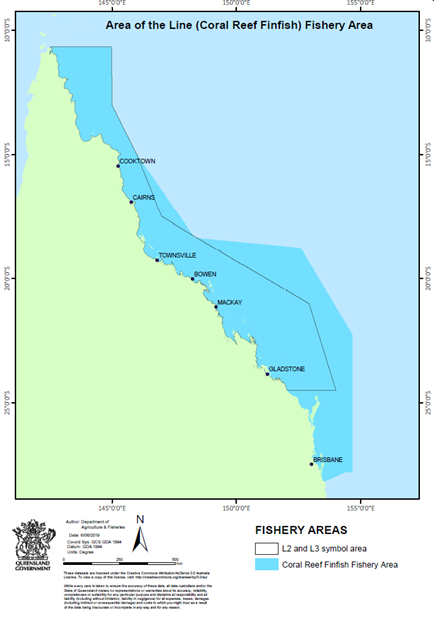Reef line fishery management
About the fishery
The reef line fishery is a multi-species fishery. Coral trout (Plectropomus spp.) is the main target species for commercial fishers, and is often caught without high harvest rates of other non-target species. Commercial fishers also harvest redthroat emperor and a wide range of coral reef species.
Fishing presents a low risk to the sustainability of coral reef fin fish stocks, due to the existing management framework and Great Barrier Reef Marine Park zoning.
The fishery also includes a large charter and recreational component, with significant interest in coral trout, emperor and tropical snapper species (among others). It's estimated that harvest by traditional fishers aligns closely with the recreational fishing sector.
Commercial sector
Commercial fishers in the reef line fishery operate predominantly within the Great Barrier Reef Marine Park, targeting high-value coral trout for live export.
Commercial operations range from large primary fishing vessels with a number of smaller tender boats (dories) fishing over a 2-week period, to smaller operations undertaking single day trips.
The reef line fishery is considered to be sustainably managed and has a Wildlife Trade Operation approval from the Australian Government under the Environment Protection and Biodiversity Conservation Act 1999.
The following fishery symbols define the areas of commercial operation:
- L1 — line fishing south of 24°30´S
- L2 and L3 — line fishing north of 24°30´S in the Great Barrier Reef Marine Park
- L8 — multi-hook deep line fishing in waters greater than 200m.
To ensure the sustainability of coral reef fin fish, commercial fishers must comply with rules including:
- licence requirements (limited entry fishery)
- gear requirements
- a closed season
- no-take of certain species
- minimum legal size limits
- tender number and size limits
- vessel size limits
- vessel tracking on all boats.
There are restrictions on the amount that commercial fishers can harvest — each licensed commercial fisher is allocated a number of quota units for coral trout, red throat emperor and other species.
Recreational and charter sectors
Recreational fishers access the fishery via private recreational vessels or as paying customers on offshore charter operations (both single and multi-day charters).
Recreational fishers and charter operators must comply with:
- minimum legal size limits
- possession limits
- no-take of certain species
- gear requirements
- closed seasons.
Traditional fishing sector
The traditional fishing rights of Aboriginal peoples and Torres Strait Islanders are protected under native title legislation and relate to harvest for domestic, communal and non-commercial purposes.
Aboriginal peoples and Torres Strait Islanders desire more economic opportunities through fishing, particularly in their own sea country. Up to 5 tonnes will be set aside to provide access through an Indigenous fishing permit to provide opportunities for communities to take part in fishing-related business.
Harvest strategy
The reef line fishery harvest strategy outlines how the total allowable commercial catch and recreational catch level is adjusted to ensure the total harvest of key species maximises ecological, economic and social outcomes for the fishery.
Decision rules in the harvest strategy are used to work out the amount of harvest that the target species can sustain. Secondary and byproduct species are also monitored to ensure that harvest of these species does not increase to levels that might represent a risk to their stocks.
The stock levels of species in the fishery are estimated using:
- commercial and charter fishing logbook data
- age and length data
- statewide recreational fishing surveys
- boat ramp surveys
- underwater visual survey data
- stock assessments.
The harvest strategy is used to assess the reef line fishery and set the total coral trout allowable catch for each season.
Management advice
Management advice for the fishery is updated annually:
Stakeholder engagement
The reef line working group is made up of representatives from conservation, harvest and traditional fishing sectors. The group provides operational advice on the management of the fishery.
